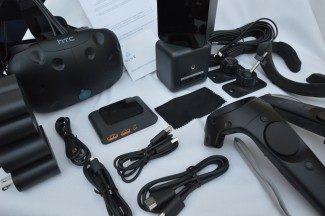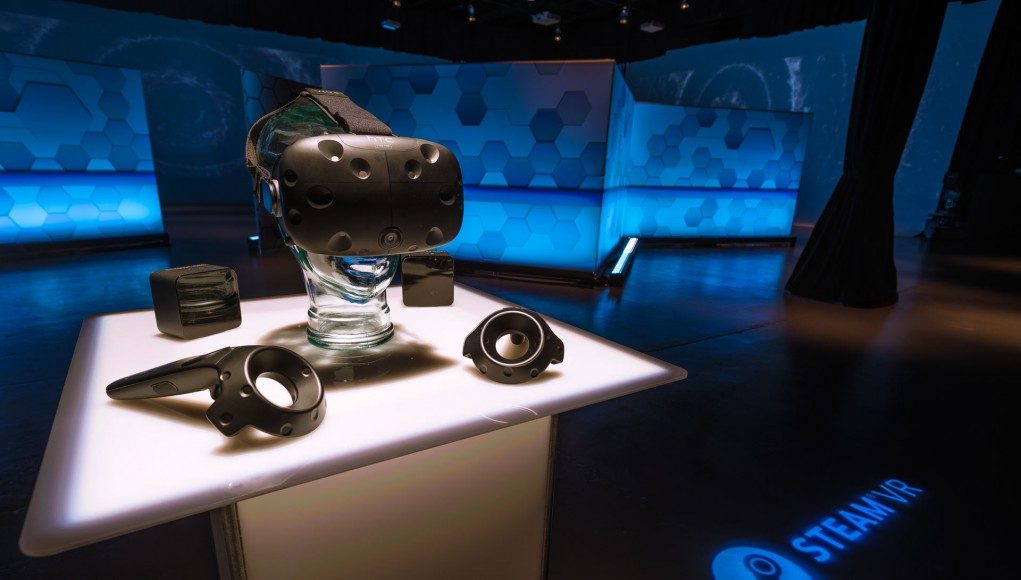In the company’s most recent earnings call, HTC confirmed it’s making a profit on each Vive headset sold, and that the company has sold “much more” than a widely reported 140,000 units.
Following recent financial troubles from the tumbling smartphone portion of the company’s business, HTC points readily to their relatively new VR business as a beacon toward recovery and eventual growth. In accordance with a Q3 investor earnings call, the company reports “continued sales momentum for the HTC Vive systems across
both consumer and enterprise markets.”
“Much More”
Analysts and investors hoping for a strong HTC comeback pressed the company for details on performance of the Vive’s sales and growth during the Q3 earnings call. Like its competitors in the VR space, the company has declined to give specifics on headset sales this early in the development of the product category, but did respond to questions about a 140,000 unit sales figure that was reported initially by Chinese VR site 87870 and subsequently picked up by many others.

“Right, so I think this is a good question because I also read the [reports about the 140,000 unit sales figure]. I actually talked to [HTC Chairwoman] Cher [Wang] on that,” said Chia-Lin Chang, President of Smartphone and Connected Devices at HTC, in response to a question by an analyst at Arete Research.
“I don’t know [how] this 140,000 number came up. Cher comment[ed] on it, and I can confirm to you here that her comments, basically—of course it’s higher than 140,000. It’s much more than that number,” Chang continued. “But I will not be able to give you a number, and I would encourage you guys not to refer that number. That seems to be anchored fully on something that we have no idea where it came from.”
The seemingly awkward response may be explained by the company wanting to assure investors that sales are better than the reported figure while not wanting to disclose the actual figure. Chang explains why:
“You can see that—from HTC perspective we’re also interested in knowing [competitors sales figures], just vice versa in the other people’s shoes they want to understand HTC. That’s why I would never disclose [the exact figure], because this is the best protection of HTC interests, shareholders, in the long term,” he said.
Previously we had correlated SteamSpy ownership data for bundled Vive games as an indicator of the HTC Vive install base, but—depending upon exactly how much Chang means when he says “much more than that number,”—the method may be flawed. Presently Tilt Brush data would be the best indicator for that method, as it’s the only game that’s been bundled with the Vive since launch; its current ownership figures would suggest a Vive install base of 143,000 (± 10,030) units, but this may not account for enterprise sales of the Vive business edition, and would exclude some number of Vive units unless the Tilt Brush bundle applies to every region where the Vive is sold (which at this time is not clear).
“What I can tell you is, we—as I say, last time, on the last earning call, we were happy [with] the selling condition [of the Vive] as to the last earning call. I’m very happy to report to you that we continue to be happy with the current selling condition in last quarter,” Chang said in the earnings call. “And we’re looking to hopefully a good—I don’t mean to forward looking, but we’re hopefully looking for a good, happy Christmas shopping season for that.”
Chang likened the current VR landscape to a “horse-racing land-grab era,” though he did admit, “I’m not sure it’s the right, appropriate description.” Ultimately he called this portion of the company’s business “the beginning of something very fast expanding, exciting era.”
Sold for Profit
Chang also confirmed another interesting detail, the company does “sell per-unit Vive at a profit.”

While it might seem obvious that an $800 product would be profitable, the notion of profit doesn’t quite jibe with past statements from Oculus who said that their $600 Rift headset was being sold at-cost (no profit). Both headsets have a similar set of components and requirements, and when you add on Oculus’ $200 Touch controllers, the systems units are identically priced.
Without more details—like what exactly the company tallies as contributing to the cost of each headset—it’s tough to say for sure, but there’s a few ways to attempt read this. First is that HTC may simply have a more efficient operation when it comes to producing and selling the Vive—which the company is said to manufacture itself—compared to Oculus. Another possibility is that the per-unit sales may not have been profitable to start, but eventually achieved profitability as the requisite processes improved. Oculus too, may no longer be selling at-cost, or may not ever have been if the cost definition is applied consistently between both company’s operations.
Of course the question remains then for consumers, exactly how much profit are we talking about? $800 is a hefty price to pay, especially for products still in the early-adopter phase, and there’s no doubt that VR needs to get cheaper to spread widely.
Regarding the question of mainstream pricing, investors too want to know what the price trajectory looks like for the Vive going forward. Naturally, that’s not something HTC was ready to give much detail on, but Chang shared, “So we do think we have a good pipeline [for reducing consumer price point in the future]. This is a long-term game for HTC.”







